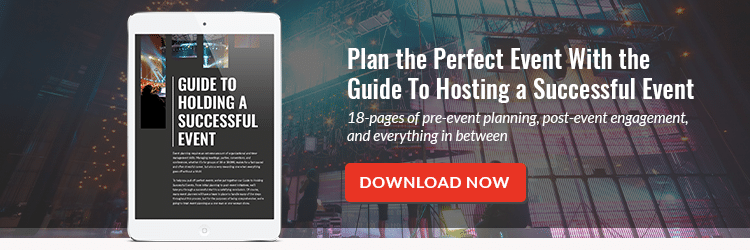It wasn’t all that long ago that social media burst onto the scene, and today it is arguably the most important way to promote an event, whether it’s a trade show or a concert. Today, Americans spend more than 215 weekly minutes on social media via smartphone, more than 60 weekly minutes via laptop or desktop, and nearly 50 minutes per week on tablet devices, so it’s crucial for event planners to familiarize themselves with each social media platform. Social media lets you reach a very broad audience or target a specific niche audience, and it’s much less expensive—or free—when compared to traditional advertising. In part one of this two-part series, we take a look at Facebook, Twitter, and Linkedin.
Boasting over 2.5 billion monthly active users worldwide, Facebook is a must-have marketing tool for any event planner. If you’re promoting an event for a specific company, the first thing you’ll want to do is set up your Company Page. It’s a great way to be found by others, build relationships, and nurture leads. Company pages should provide useful information, be personalized, and updated frequently with new content to keep viewers interested. Then, it’s time to set up your event within the Facebook Event section (for events not tied to a specific company, this would be step number one). The event may be private if you’re only inviting certain people within an organization, or public if it’s open to everyone. But you can’t just create an event and expect it to work on its own; after all, there are about 50 million events created each year, so you need to make it stand out.
- Choose an attention-grabbing 1920×1080 cover photo
- Be specific about location, time, and category so Facebook can assist in promotion
- Create an event description that will generate excitement
- Include a ticketing link and make it front-and-center (if you don’t have your own ticketing site, you can sell through Facebook’s Eventbee ticketing app).
Facebook provides additional information to guide you through the event creation process to make the most of your listing. Get the details on the event help page. Have a social media budget? Facebook paid advertising is another great way to complement your event listing and get noticed.
Attention spans are getting shorter—now less than 8 seconds—and Twitter has recognized this since day one. The platform limits tweets to a svelte 280 characters to make messages purposeful and scannable; perhaps that’s why the little blue bird now has more than 330 million users! It’s easy to get started on Twitter in order to get out the word about your event: just create a handle and send out posts (of course, you need to develop a following first or no one will see your tweet; develop one by following others). You can also create events on Twitter; you can read more about how to set them up on the Twitter events page. Because messages need to be short and sweet on Twitter, users often make their tweets comical or quirky. That’s fine for this medium, but beware the dreaded Twitter faux pas. As countless celebrities and politicians have learned, one wrong move and the Twitter community can quickly turn against you. Lastly, while #hashtags can be used on any social site (and we encourage it), Twitter is where the hashtag began and where it thrives the most. Be sure to craft a clever, memorable hashtag around your event, and use it on posts. With luck, it will be picked up by others, further spreading the word about your event.
Compared to other social sites, Linkedin is more professional in nature, with many of its 600 million users joining in order to make business connections and to network with specific companies. So while you may not use Linkedin to promote a concert, this does make it an ideal place to promote an event tailored toward professionals, whether it’s a job fair or an industry-specific trade show. If your event will feature recognized professional speakers, be sure to include a photo of them; this is the site where businesspeople, political figures, and others outside the general celebrity culture will be recognized and appreciated. For now, planners looking to promote on an event on Linkedin will have to create a company page (you can get started here, but first you’ll need to create a personal Linkedin profile). That’s because Linkedin Events is currently being tested and is only available to a small group of Linkedin members; the platform intends to make the experience available to all members in the future. Of course, paid Linkedin ads are also an option. These three social media giants are a great way to get the word out about your next event. Used individually or in conjunction with one another, they can have a tremendous impact on turnout and the talk around town. Look for part two in this series coming soon, in which we’ll focus on Instagram, YouTube, and Snapchat. Of course, you don’t want to draw hundreds or thousands of people to an event with subpar audio and visual, right? One Way Event Productions can make your next event look and sound great. To learn more, contact us today.


